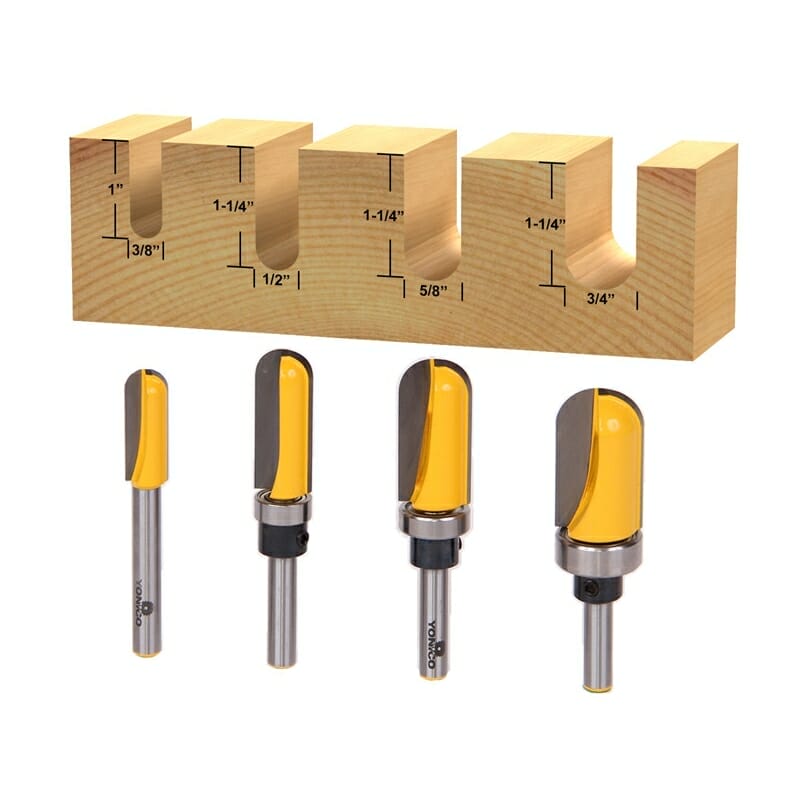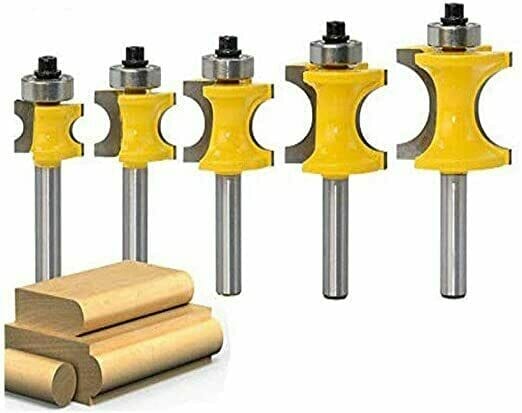Our Best Guide To Using a Bullnose Router Bit

Woodworking with routers is easy thanks to the wide variety of bits you can use with these devices to improve cutting accuracy according to the work you are doing.
Bullnose router bits, in particular, are excellent for an oval and curved edge, they can be used easily by just attaching them to your router and sliding the stock through for your bullnose cuts for rounded edges.
In our guide below, we will take you through some more general information about bullnose router bits as well as how to use them to help you out with your DIY bullnose woodworking cuts.
What Is a Bullnose Router Bit?

Before we can get into how to use a bullnose router bit on your piece of wood, let’s discuss what a bullnose router bit is first and how it can be used on a handheld router.
A bullnose router bit is typically used on a router to make curved types of edges with ease and accuracy in comparison to a round-over bit and a beading router bit. The shape of bullnose edges can be used for making bead profiles in woodwork, dividers on draws and other woodworks which require smooth edge cuts.
The router bit can further be used for making impressions in stone and other building materials where you need curved edges.
In comparison to a roundover router bit, they also allow you to have a completely smooth edge in curved pieces without an annoying flat spot at the top of your edge radius due to their style of cutting.
What Are The Other Types Of Router Bits?
When looking into bullnose router bits you may also come across some other router bits which claim to do a similar job, to avoid confusion we’ve listed out the definitions of some of these other router bits below.
- Roundover bit – These are similar to bullnose router bits as they are used for making round edges in woodwork. The bits also have different ballbearing sizes depending on the work that you are doing.
- Cove bit – Cove bits are used for making concave cuts in woodwork and can help to add decorative touches to your work such as in bedframes.
- Rabbeting router bit – These router bits are L-shaped and are used for creating notches in woodworking material, they have ball-bearings of different diameters and can be used to make joints in objects such as drawers or cabinets.
- Straight cutting router bit – This router bit is used for making straight cuts and grooves in your work, this has to be used with caution when cutting edges in woodwork since it has no pivot making it easy to make inaccurate cuts.
Types Of Bullnose Router Bits
A bullnose bit for a router comes in two different types, a bearing guided bit, a non-bearing guided bit and a double bull nose router bits.
We’ll discuss the definition of each type of bullnose router bit below.
- Non-bearing router bit – This type of bullnose router bit is the best for using in tight spaces and also be used inside of CNC machines, they come in sizes between 1/4 inch to 1-1/8 inch in diameter and can be used for measuring wood thickness due to the bead height.
- Bearing router bit – Best for making standard bullnose curved edges as well as shape and outline routing, it’s super easy and accurate to set on a router device.
- Double bullnose router bit – A double bullnose router bit on a router table can be used for making a bullnose cut at two points on your woodwork at the same time, such as impressions in stone for example. This allows you to save time since your not making the same pass more than once.
Our Guide To Using a Bullnose Router Bit
Making a rounded edge with your bullnose router bit is easy once you get the hang of it, we’ve gone into more detail about how to use one of these bits on your wood router below.
- Step one – To begin make sure your router is ready with your wood stock secured in place, before clamping your router piece down ensure you have pre-marked the curved edge you are going to cut in the material.
- Step two – If you need to cut your stock to the size we would suggest doing so at this point with your preferred cutting tool so you can focus on getting curved bullnose edges with the bit only.
- Step three – Now fit your bull nose types of the router bit to the device and start to cut your curved cutting edge. Run your wood along the bit in gentle up and down movements until you have your desired types of edges. For a stationary router table always ensure that your wood is making contact with the router on the side where you want to make the impression.
- Step four – Once you have your bullnose edge you can finish your work by sanding it over for a smoother curved edge.
Final Words
To conclude, we hope you enjoyed our guide to bullnose router bits and how to use them in your DIY woodworking, these router bits are an excellent choice for making curved edges accurately without a flat top and save you time too.
If you are a beginner woodworker we would always suggest trying out your bullnose router bit on a few scrap pieces of wood till you get the hang of making curved edges with ease.
